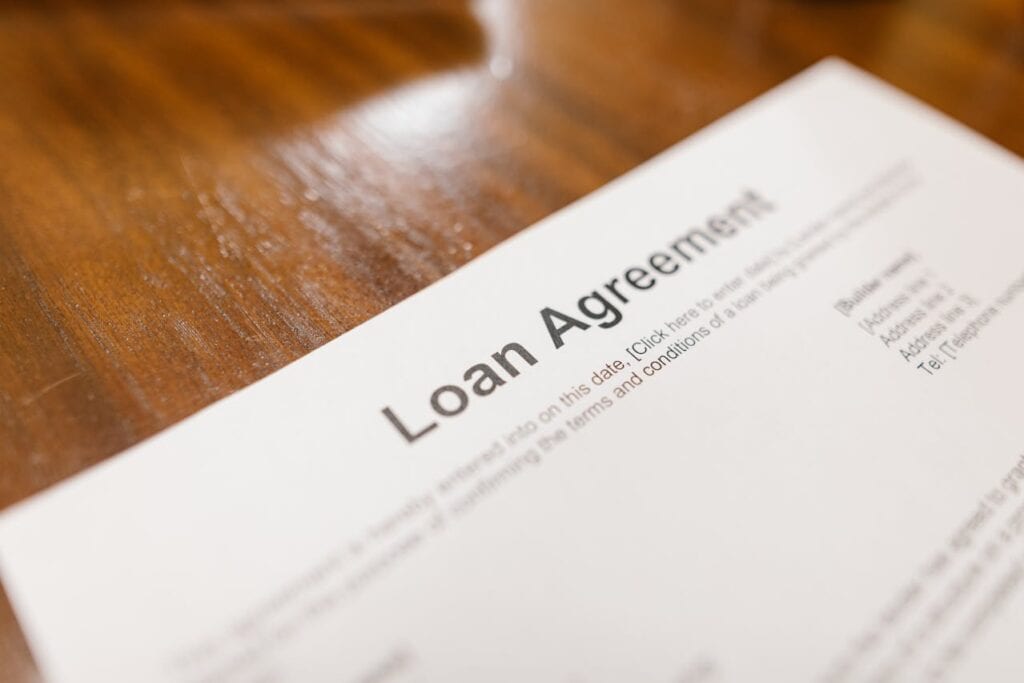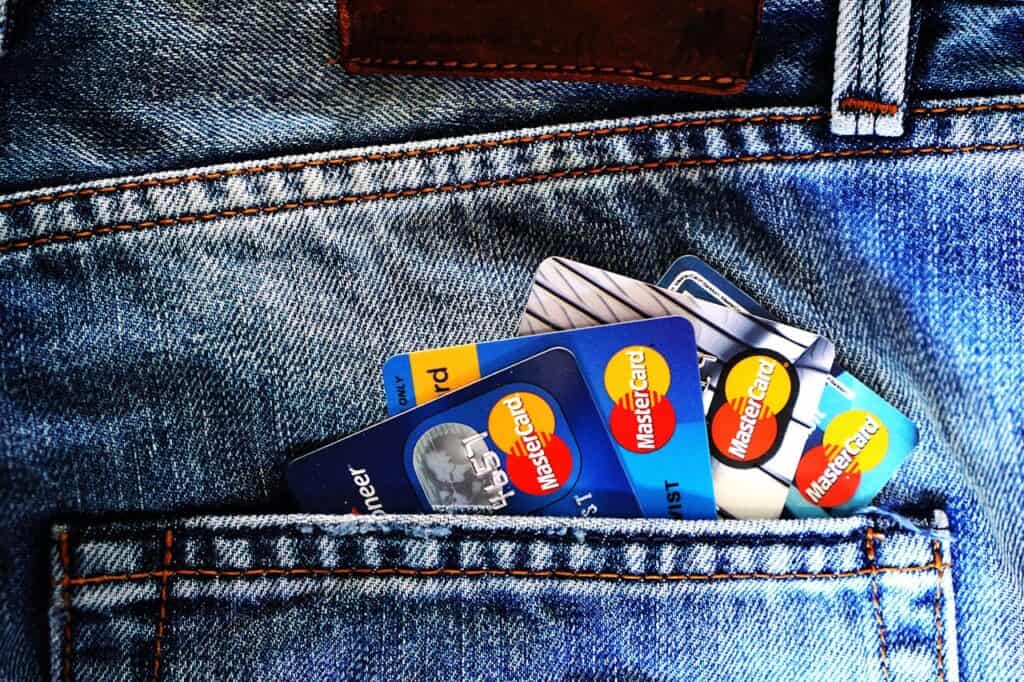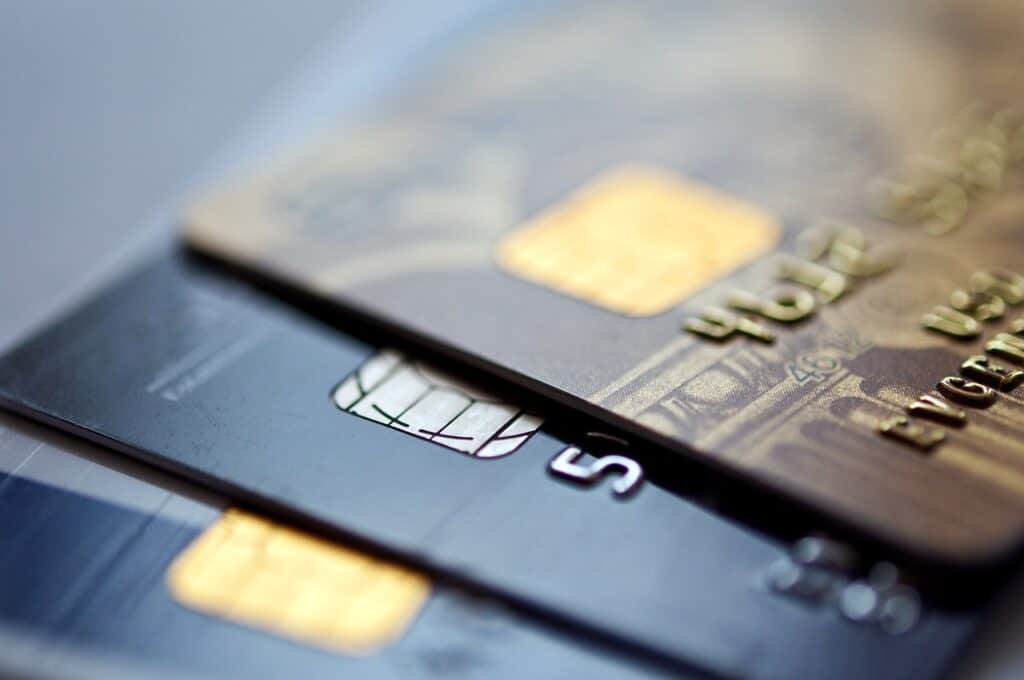The New York Federal Reserve reports that total consumer debt reached $17.5 trillion in 2023. Though the vast majority – $12.25 trillion – stems from mortgages, or “good” debt, that’s a lot to owe. (Especially given consumers’ $1.1 trillion in credit card debt.)
At this rate, almost all Americans carry some type of debt: mortgages, credit cards, personal loans. Debt is part of daily life, and it’s often useful when paired with judicious planning. Unfortunately, it’s also precarious; it doesn’t take much for spiraling balances to threaten your family’s financial foundation.
Debt’s prevalence means it’s impossible to truly command your finances without understanding the basics. Comprehensive debt management starts with knowledge – and ends with the confidence you can handle what life throws your way.

What is debt?
In broad strokes, debt is something – usually money, but also goods or services – that one person or business owes another. Borrowing debt may involve signing a contract outlining payment requirements (size and duration), borrowing costs, and penalties. These contracts detail essential features of your debt, like your:
- Principal: the initial amount you borrow
- Balance: how much you currently owe (principal plus interest)
- Interest: your cost or payment to borrow money
- Repayment term: how long you have to repay your debt in months or years
- Collateral: any valuable item used to “secure” your loan
- Not all loans require collateral, but secured loans may offer larger debts or better repayment terms
How debt works
Anytime you borrow money, you take on debt. In formal settings (i.e., non-family deals), acquiring debt tends to follow a similar procedure:
- You apply for debt from a lender or financial institution
- The lender examines your income, existing debt, creditworthiness, and the presence of any coborrowers
- The lender will approve or deny your application based on your financial health
- If approved, you’ll receive your money or access to line of credit
- The lender also sets your interest rate, repayment term, and minimum payment (the smallest amount they consider a “full” payment)
After receiving your money or spending against your credit, you’ll start repaying your loan. Most lenders report your payments (or lack thereof) to the credit bureaus, which builds (or destroys) your credit.
The relationship between credit and debt
You’ve probably heard “credit” and “debt” used interchangeably, but the differences matter hugely:
- Debt is any money, good, or service you owe another party.
- Credit is the amount of money you could borrow, but not necessarily the amount you owe. Often, your borrowing potential exceeds your actual debt.
- Credit also describes your creditworthiness, i.e., how responsibly you’ve handled past debts. Credit bureaus collect this information from your lenders to build your credit history and credit score. Lenders then check your credit to determine if you can borrow, how much, at what price, for how long.
Put another way: your credit controls your ability to access debt, which makes up a portion of your total credit.
The role of interest in debt
Almost all lenders charge interest to offset the risk that some borrowers won’t repay their loans. You’ll usually see interest rates expressed as a percentage of the loan amount (say, 7.5%).
You can divide interest into several categories:
- Fixed rates stay the same for the life of the loan
- Variable rates fluctuate with the market rate, impacting your monthly payment
- Simple interest is calculated only on the original balance of the loan
- Compound interest adds accrued interest to the loan principal (often daily or monthly), then adds interest on interest
- APR, or annual percentage rate, describes how much interest and fees you’ll pay in one year
- Your APR represents your total cost to borrow money, making them handy tools for comparing debts of the same type
- APR, or annual percentage yield, describes how much interest you’ll earn in a year (including compounding) on your bank and savings accounts
You should also understand how y our debt payments and interest rates interact. Lenders apply the bulk of your monthly payments to your interest before paying down your balance. The more interest you owe – and the smaller your monthly payments – the longer it takes to repay your balance, increasing your loan cost.

Types of debt
A debt’s type – installment vs. revolving, secured vs. unsecured, business vs. personal – tells you how it functions. Individual debts can also check several boxes: e.g., mortgages are installment debts secured against the purchased home.
Installment debt (loans)
Examples:
- Personal loans
- Auto loans
- Student loans
- Mortgages
Installment debts are “traditional” debts. You borrow a set amount of money (a lump sum) and repay your principal plus interest over time. Contracts usually stipulate a minimum monthly payment over a set term, fixed or variable interest rates, and applicable fees or prepayment penalties.
Revolving debt (credit lines)
Examples:
- Credit cards
- Charge cards
- Home equity lines of credit (HELOCs)
Revolving debts operate differently. Instead of handing you money, they set an interest rate, minimum payment, and maximum borrowing amount (credit limit). You then spend against your credit limit by swiping a card or withdrawing cash.
As long as you make your minimum payment and don’t exceed your credit limit, you can tap revolving debts endlessly. Some revolving debts even let you avoid interest if you repay your monthly balance in full.
Secured debt
Examples:
- HELOCs
- Mortgages
- Auto loans
- Secured personal loans
- Secured credit cards
Secured debts require borrowers to put up collateral to “secure” them. If the borrower doesn’t pay their debt, the lender can seize and sell their collateral. These debts pose less risk to lenders, resulting in lower interest rates than unsecured debts.
Secured debts can work several ways. Some, like mortgages, purchase their collateral. Many secured loans permit a variety of collateral like cash accounts or insurance policies. Secured credit cards require a cash deposit that acts as your credit line. And HELOCs grant you a revolving credit line based on your home’s equity.
Unsecured debt
Examples:
- Credit cards
- Student loans
- Personal loans
Unsecured debts don’t require collateral – instead, lenders rely on your income, creditworthiness, and cosigners to make decisions. Since unsecured debts pose more risk to lenders, they generally set stricter eligibility requirements and charge higher interest rates.

Using debt as part of good financial health
Expensive or uncontrolled debts drag down your family’s financial health. But well-researched, well-managed debts can actually improve your family’s foundation by building equity and working toward long-term goals.
Responsible debt use has benefits…
Borrowing money unlocks financial opportunities for individuals and businesses. Taking on debt allows you to:
- Make large purchases you couldn’t afford immediately (“leverage”) like homes, cars, or college educations
- Choose from flexible repayment options to find a rate and payment that fits your budget
- Tap lines of credit during emergencies
- Take advantage of tax benefits (usually deducting interest paid on business, student, and home loans)
Plus, responsible use and debt payoff helps build credit so you can borrow more (and more affordably) later.
…And all debt use has potential drawbacks
A healthy relationship with debt involves borrowing only what you need and can afford. But even “good” debts pose risks:
- Having any debt ties up income that could go toward other goals or needs
- Large credit limits make it easy to rack up more debt than you can readily repay
- High-interest debts (7-10%+) compound quickly and slow your progress toward goals like having children or retiring early
- Missing even one payment racks up fees and drags down your credit score
- Certain life events, like unexpected job loss or medical bills, can severely hinder your ability to afford your debts, digging you deeper into the hole
Financial specifics aside, owing money weighs on your mental health and can contribute to anxiety, depression, and even relationship troubles. (Particularly if you and your partner disagree on the best debt management strategies for your household.)
Good vs. bad debt
Taking on some debt can help your family build a solid financial foundation. But it’s important to understand the distinction between “good” and “bad” debts.
What are “good” debts?
Good debts improve your financial situation, build equity, purchase assets, or provide shelter during financial turbulence. While this definition gives families the flexibility they need to make individualized decisions, good debts usually include:
- Mortgages that contribute to building equity, financial stability, your net worth, and even family inheritance
- Student loans that pay for degrees to expand your career opportunities and lifetime earnings
- Business loans that fund your entrepreneurial goals
What are “bad” debts?
Conversely, bad debts drain your wallet, hinder your financial and familial goals, and/or don’t generate income. These debts may charge high interest or contribute to “debt traps,” where you owe so much you have to borrow more to pay your bills.
Though some traditionally “bad” debts can be useful in some circumstances, this category usually includes:
- Credit cards with high interest rates
- You may use these to your advantage if you qualify for 0% interest rates, can repay your balance each month, and/or use cards with points or cashback rewards
- Auto loans that purchase depreciating assets
- Auto loans may be “good” debts for your family if they help get your family into a safer vehicle
- Personal loans used to pay for nonessentials like weddings, vacations, furniture, etc.
- Predatory debts like payday and title loans that charge exorbitant amounts to people in desperate situations
While more complicated, most borrowers should also avoid margin loans, where you borrow from your brokerage to buy securities. Margin loans encourage short-term “bets” that often lose compared to long-term, buy-and-hold strategies.

Debt management strategies for lifelong success
Proper debt management goes beyond paying off debt after incurring it. It’s about managing debt at every stage with your lifelong financial and family goals in mind.
Lean on reliable debt management tools
Debt management isn’t everyone’s forte – and even if you enjoy the process, busy families often don’t have spare time to micromanage their finances. That’s where debt management tools like the Tiller Debt Payoff Planner come in handy.
Tiller Debt’s superpowered spreadsheet platform automatically tracks your debts in one dashboard, giving you the information and tools you need to customize your debt payoff strategy based on your actual situation.
Budget before taking on debt
It’s always smart to have a budget to track your spending, even if you’re higher-income. At their most basic, budgets support your saving and financial goals and can minimize unnecessary expenditures. Then, when you’re ready to take on debt, you’ll already know what you can afford out of your disposable income.
Build an emergency fund
Emergency funds (3-6 months of household expenses in a high-yield account) provide a safety net in tough times. Having a cash reserve reduces or eliminates your need to incur debt when you encounter, well, emergencies. You can even start while paying off current debts: just $25 a week makes a huge difference over time!
Borrow less than you can afford
Just because your lender offers you $20,000 (or $200,000, or $2 million) doesn’t mean you should borrow the whole amount. In fact, it’s smart to borrow not just less than you qualify for, but less than you can comfortably afford. That way, if you lose your job or incur unforeseen bills, you have more cushion in your debt payoff plan.
Pay a little extra
Borrowing less than you can afford also frees up more income to pay extra on your debts. The more you pay now, the less interest you’ll owe long-term, even on smaller balances.
Pay off your cards monthly
One of the easiest ways to manage your load is to pay off your credit card debt in full each month. Doing so builds credit and earns rewards without you paying interest. You might even open a card or two just for that purpose.
Keep your CUR low
Your credit utilization ratio, or CUR, measures how much debt you owe compared to your available credit. (For instance, if you owe $5,000 on a $10,000 credit limit, your CUR is 50%.) Keeping your CUR below 30% – ideally under 10% – benefits both your wallet and your credit score.
Maintain an affordable DTI
Your debt-to-income ratio (DTI) measures how much of your monthly income goes toward debts. For DTI purposes, monthly debts include your mortgage/rent, car loans, credit card bills, student loans, and similar.
Generally, you’ll want to keep your DTI under 35% for credit and financial health reasons. While higher-income households have more wiggle room, mind that you’re not bleeding your earnings on frivolous debts!
Keep an eye on your credit report
Your credit report tracks your borrowing activity, from applications to payments to overdue balances. You can pull your credit reports free each year at annualcreditreport.com to check for fraud, negative marks, or generally check your credit health.
Take steps to boost your credit score
Your credit report feeds your credit score (another reason to stay on top of things!). Higher scores tend to garner lower interest rates, better approval odds, and larger credit limits. If you’re concerned about your credit score, you can try boosting it by:
- Minimizing applications
- Only borrowing what you need
- Keeping revolving debts under 30% of your total limit
- Making all payments on time
- Paying more than the minimum
- Mixing up debt types to show lenders you’re responsible in multiple arenas

Strategies to repay debt quickly
Sometimes life happens and you find yourself facing more debt than you can easily handle. Whether you’ve lost your job, relied too heavily on credit, or just want to slash your bills, these tried-and-true strategies can help you get ahead.
Debt snowball method
The debt snowball method involves organizing your debts by balance (size). You make the minimum payment on all but your smallest debt, which you throw your extra disposable income at. When that debt’s repaid, you roll that payment into the next-smallest balance, generating a “snowball” effect.
The debt snowball method sometimes costs more than other approaches. However, the positive psychological impacts that come from knocking out debts like dominoes can encourage you to keep on your current path.
Debt avalanche method
The debt avalanche method involves organizing your debts from highest to lowest interest rate. You make the minimum payments on all but your highest-interest debt, which you double down on. When that debt’s repaid, you roll your payment into the next-highest rate debt.
The debt avalanche method can decrease your lifetime interest as you knock out your most expensive debts first. However, it may take longer to shed individual debts depending on their size, which some borrowers find demoralizing.
Debt consolidation
Debt consolidation involves taking out a loan or low-interest balance transfer card to pay off other, usually high interest debt. This debt payoff strategy can reduce your total interest rate and the number of payments you have to make each month.
Some borrowers find debt consolidation loans simplifies their financial organization, eases the burden on their wallet, and reduces the risk of missing a payment. That said, you still have to qualify for the new debt – and resist the urge to spend against your newly-paid-off credit lines.
Hybrid approach
Hybrid approaches don’t follow a hard-and-fast method; it simply describes debt repayment strategies that mix the above approaches. For example, you may consolidate your high-interest cards and knock out your smallest loans first. There’s no right or wrong way to hybridize your approach; there’s only right and wrong for your family.
Watch out for prepayment penalties!
Some debts carry prepayment penalties so lenders can recoup the interest they miss when you repay debts early. Make sure that your savings outweigh any prepayment penalties before shedding your debts ahead of schedule.
Don’t be afraid to negotiate
Many creditors will negotiate your debts if you ask, especially if you can prove extenuating financial or familial circumstances. They may temporarily pause your payments, lower your interest rate, lower your monthly payment, or even partial debt reduction. The worst they can do is say no – so it’s worth a call!
Pick up a side hustle
A side hustle probably won’t solve all your financial problems, but bringing in regular income definitely takes the edge off your bills. Whether you want to work remotely, pick up gig work, or dive into entrepreneurship with your spouse, there’s a side hustle out there for you.

When debt spirals out of control
Sometimes even the best-laid debt strategies go awry, requiring drastic steps to wrest your finances under your control. Depending on your situation, you may not prevent all the financial or credit impacts, but you might be able to mitigate them.
Don’t wait until you’re in trouble to call your creditors
If you’re at risk of falling behind on your debts, don’t wait: call your creditors immediately. The sooner you bring them into the loop, the more likely they’ll work with you, not against you. They may offer payment pauses, lower rates, debt reduction, assistance finding financial relief, or credit counseling to get you back on track.
Reach out to a credit counselor
Reputable credit counseling organizations offer tailored financial, budgeting, and debt repayment advice. Their certified counselors have the training to get you back on track however suits your situation. Most are nonprofits run through national organizations, credit unions, and universities with low fees and services offered online and by phone.
Consider a debt management plan
Many credit counseling agencies offer individualized debt management plans to help you repay unsecured debts. (Secured debts usually don’t qualify.)
Debt management plans involve “financial triage” between you, your creditors, and the credit counseling organization to find an agreeable debt repayment plan. The counselor negotiates new payment terms with your creditors on your behalf, then takes your monthly payment and applies it among your debts according to the new plan.
Payment plans aren’t for everyone, though. They can take years to complete, require timely payments, and may include provisions to prevent you from applying for or using any credit until completion.
Avoid debt settlement companies
Debt settlement programs aren’t the same as debt management plans.
Most debt settlement programs are operated by for-profit companies and target people with substantial unsecured debts. They “negotiate” with creditors to let you pay a settlement, or smaller debt than you actually owe. These plans may require you to save a certain amount each month until you can pay the settlement amount in full.
But these programs carry lots of risks:
- They encourage you to stop making monthly payments without negotiating first, which can damage your credit
- Creditors have no legal obligation to settle debts rightfully incurred
- Any written-off debts may count as “taxable income”
- Debt settlement company fees can be predatorily high
Plus, many dishonest companies overpromise, underdeliver, or even abscond with your money.
As a last resort: Bankruptcy
If you’re truly in over your head – your business fails, your mortgage slips underwater, your credit card debt spirals – bankruptcy is a valid, if serious, option. While it can destroy your finances and credit and may not preclude foreclosure, it also restructures or forgives certain debts and shines a light at the end of the tunnel.

Debt management is a lifelong endeavor
Debt management isn’t about paying off existing debt; it’s about curating a holistic approach to your finances and applying as much foresight as possible. The best way to protect your family, set your kids up for financial freedom, and make it to retirement financially intact – if not ahead – is by managing debt responsibly from your first loan to your last.

